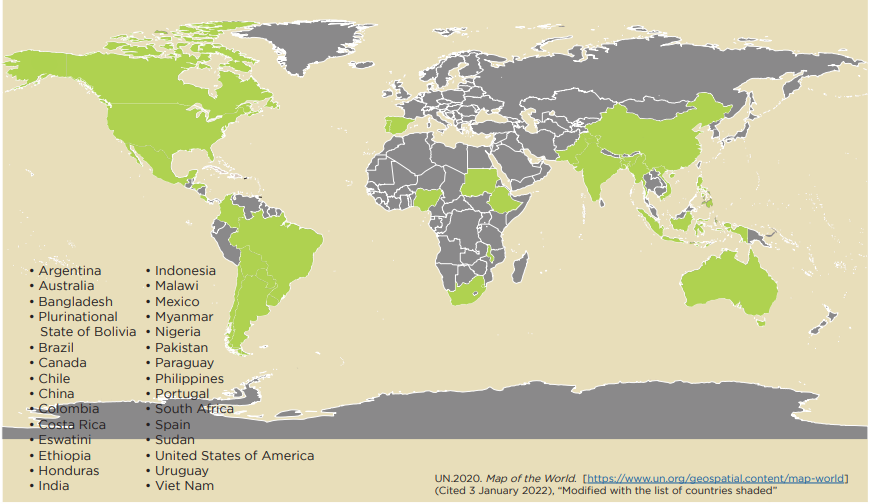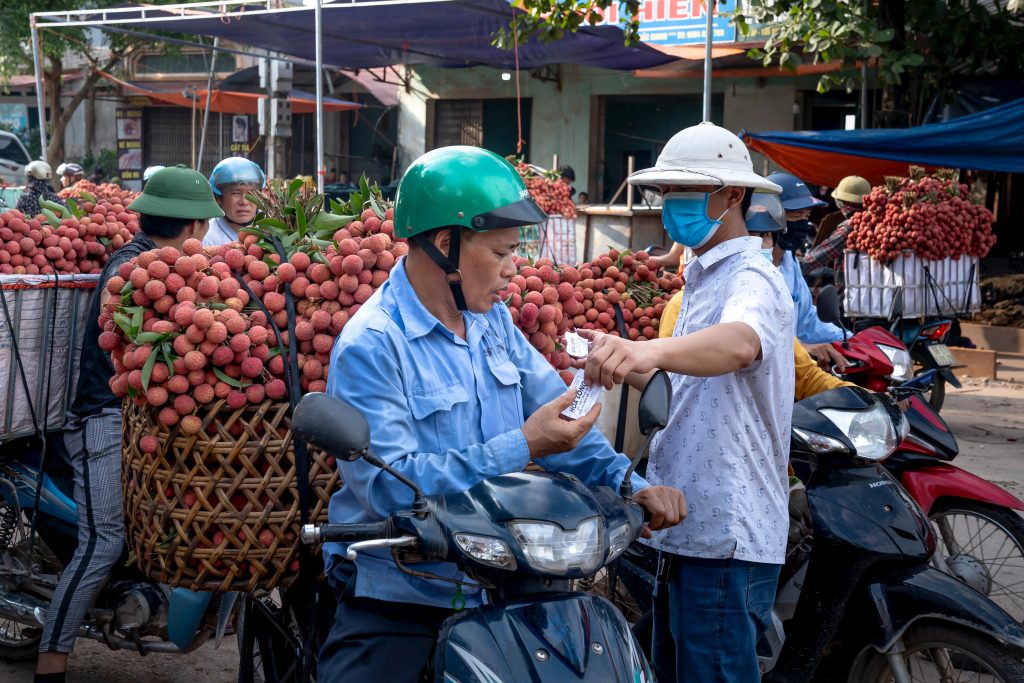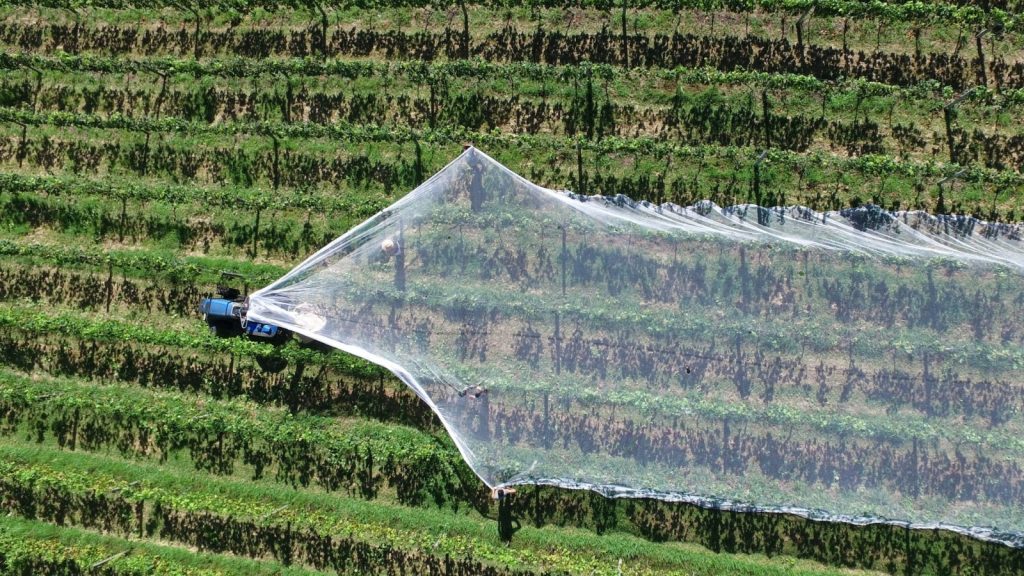Introduction
Food and agriculture play a vital role in achieving the UN’s sustainable development goals by 2030 [2]. Innovation is key, as demonstrated by the development and expansion of high-yield commodity crops, which have significantly furthered progress towards SDG 2 – zero hunger [2].
However, global malnutrition remains a pressing issue. Bio-engineered crops hold promise as a solution, by enhancing nutritional content, improving yield and reducing food loss [1]. However, while they offer exciting possibilities for addressing global food security, bioengineered crops also raise complex issues. These include regulatory hurdles, public scepticism, and the need for a thorough assessment of environmental and health impacts [1]. This summary article, based on findings of reliable authorities, delves into the potential benefits and risks of bio-engineered foods, exploring solutions and opportunities.
What are Bio-Engineered Crops?
Tomatoes, a global dietary stable, have undergone a remarkable transformation from their humble origins as small, unappetizing fruits [6]. This change is largely due to human intervention through selective breeding, a process known as “domestication” [6]. While traditional selective breeding remains a valuable tool, modern bioengineering techniques offer the ability to precisely target and modify specific genes, accelerating the development of crops with desired traits, these special crops are categorized as “genetically modified” (GM) [1]. Examples include:
- Biofortification – to enhance the nutritional value of foods
- Resistance – to create crops resistant to pests, weeds, parasites, etc
- Extended shelf-life – to reduce spoilage and food loss [2,4]
Boosting Nutrition: Bio-fortified Crops
Biofortified crops offer a powerful solution in the fight against micronutrient deficiencies [2]. These crops are specially bred or genetically modified to pack higher levels of essential vitamins and minerals like iron, zinc, vitamin A, etc. (Fig. 1). By boosting the nutritional value of staple food relied upon by vulnerable populations, biofortification improves health and targets food insecurity without requiring drastic dietary changes [2]. This approach has shown remarkable potential in boosting public health, especially within developing countries [7].

Strengthening Nutrition: Resistant Crops
More resilient food sources are key to tackling global hunger and fighting food insecurity. Through new breeding techniques and bio-engineering, plant varieties resistant to pests and diseases [3], or crops that can better withstand harsher climates, like drought or extreme temperatures. These resilient crops can lead to higher yields in the face of the changing environment, especially in developing countries where food insecurity and harsh environments often overlap [1]. Higher yields directly translate to greater availability and lower prices, making nutritious food more accessible to those suffering from malnutrition [3].
Saving Nutrition: Improving Crops Shelf-Life
Lengthening harvested crops, fruit and vegetables shelf-life through breeding or genetic modification could drastically decrease food waste and fight malnutrition. Engineering crops to resist spoilage and maintain their nutritional value for longer, translates to less food lost after harvest, leading to a higher effective yield. This also ensures more people, especially in vulnerable populations facing malnutrition, have access to fresh, nutritious food [5]. Studies by the Alliance for a Green Revolution in Africa (AGRA) have shown that extending shelf-life by just a few days can significantly improve food security in developing countries [5].
The Hype and the Controversy
This article already addressed the positive benefits GM crops could bring to the plate, such as cost-effective nutrition intervention thanks to improved nutritional content, increased yields and less waste, also resulting in less environmental impact, and overall reduced costs and economic opportunities [1,2]. However, these advantages are tempered by challenges that should be well understood and addressed:
- Weeds and pests may become resistant to bio-engineered crops
- Gene flow (cross-pollination, gene transfer)
- Risk of exacerbating lack of dietary diversity in some populations
- Consumers acceptability
- Introduced allergens, toxicity, and changes in nutritional composition
- Increased corporate control of the food supply [1,2]
Addressing Consumers Concerns
Consumer acceptance remains a significant hurdle to the adoption of bioengineered crops [8]. Negative perceptions, often stemming from concerns about health, environmental impacts, and corporate control, hinder their acceptance [2]. The IFT emphasizes that addressing consumer concerns should be integral to the development of bioengineered foods, advocating for collaboration between scientists, consumers, entrepreneurs, and farmers to integrate these crops into the food system [2]. This involves tailoring products to cultural preferences and lifestyles while leveraging influential figures to showcase their benefits [2].
Balancing Innovation: Prioritizing Safety
“Are bio-engineered food safe?” is a re-current question consumers ask themselves before purchasing products that might be from a bio-engineered source. According to the World Health Organization (WHO): “GM Foods currently available on the international market have passed safety assessments and are not likely to present risks for human health”. These steps are taken to ensure that GM foods do not potentially harm human health:
- Substantial Equivalence: nutritional, anti-nutritional, allergenic, and toxic components are compared between genetically modified (GM) and non-GM crops
- Gene investigation: the inserted gene(s) undergo rigorous analysis to confirm they do not cause any unexpected or undesirable effects [1]
Addressing Environmental Risks
The potential environmental impact of bioengineered crops is a major concern that is addressed through environmental risk assessments (ERA) [1]. These assessments aim to identify, characterize, and evaluate the risks associated with cultivating these crops [1]. Specifically, contained, confined, and open field trials are conducted to assess:
- Unintended effect on the environment (flora and fauna) and non-living-components (soil, water, etc)
- Impact on agricultural practices and agronomy
- Cross-pollination and gene flow
-> GM crop research is halted if any potential risks are identified [1]
Legislative Roadmap
Legislation plays a vital role in the future of innovative agriculture and bio-engineered crops. Innovative crop techniques, particularly those involving genomic modification often face stricter regulations than conventional breeding methods. Currently, GM crops are grown in a limited number of countries (Fig. 2). Bio-engineered foods face especially stringent regulations in the European Union. While stringent regulations prioritize safety and transparency, they can potentially hinder innovation and restrict access to agricultural advancements.
However, a January 2024 proposal to revise EU regulations on new genomic techniques (NGTs) and GMOs offers a promising shift towards fostering innovation in the field.

Conclusion
Innovative agricultural techniques like bioengineering hold the potential to revolutionize nutrition by enhancing the nutritional value of food and increasing crop yields. However, these advancements also present challenges, including the need to assess potential health and environmental impacts, address market concerns, navigate regulatory hurdles, and gain consumer acceptance. Transparent communication, education, and independent research are key to fostering greater public understanding and acceptance of bioengineered foods.
Food scientists play an important role in increasing the utilization of bioengineered crops, specifically bio-fortified ones, and achieve Sustainable Development Goal 2, and can drive innovation, acceptance and regulatory framework [2].
Sources
- [1] FAO. (2022). Genetically-modified-crops: Safety, benefits, risks and global status. In FAO. https://openknowledge.fao.org/server/api/core/bitstreams/7364d823-4317-46c5-871c-5b36966bd482/content
- [2] IFT. (2024). Food Science & Technology Solutions to Improve Food & Nutrition Security: Advancing the Use of Underutilized & BiofortifiedCrops. In IFT.
- [3] International Rice Research Institute. (2022, 11 november). Climate-smart rice. https://www.irri.org/climate-smart-rice
- [4] Petrucco, L. (z.d.), Affidia Journal, Article headline. https://affidiajournal.com. https://affidiajournal.com/en/eu-parliament-s-gmos-ngts-deregulation-sparks-controversy
- [5] The Alliance for Green Revolution in Africa (AGRA). (2019). Reducing post-harvest loses key to ensuring food security. In AGRA. https://agra.org/archive/wp-content/uploads/2020/09/Reducing-post-harvest-loses-key-to-ensuring-food-security-Tanzania.pdf
- [6] The Conversation. (z.d.). Modern tomatoes are very different from their wild ancestors – and we found missing links in their evolution. https://theconversation.com/modern-tomatoes-are-very-different-from-their-wild-ancestors-and-we-found-missing-links-in-their-evolution-130041
- [7] World Health Organization. (2017). Biofortification-of-crops with minerals and vitamins. https://www.who.int/tools/elena/bbc/biofortification
- [8] Zhang, X. & Wageningen University & Research. (2022). Consumers’ attitude toward the source of biotechnology. https://www.wageningenacademic.com/doi/pdf/10.22434/IFAMR2022.0103
Related articles to Debunking Myths on GM Crops: New Solutions to World Hunger
Many customers and visitors to this page 'Debunking Myths on GM Crops: New Solutions to World Hunger' also viewed the articles and manuals listed below:



